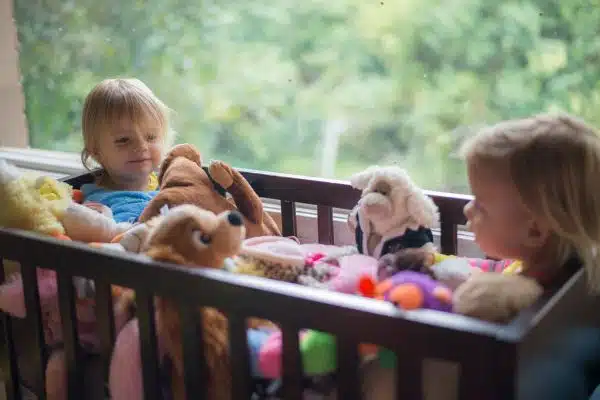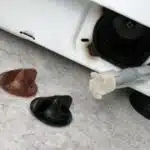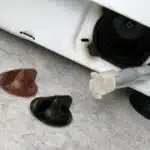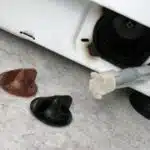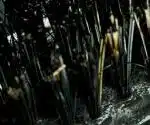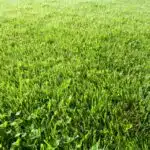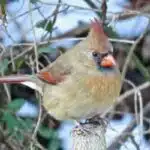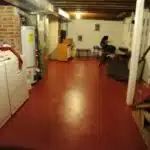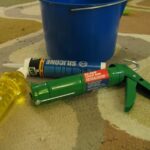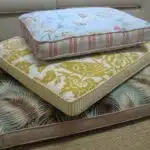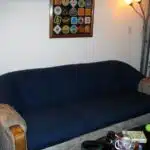Stuffed animals and toys are beloved companions for children, but they can also be a breeding ground for germs and bacteria. In order to keep these cherished items clean and safe for children to play with, it is important to know how to properly clean them. As a professional housekeeper or toy cleaner, it is essential to have knowledge on the best techniques for cleaning stuffed animals and toys to maintain their integrity, while ensuring they are free from harmful microbes.
Cleaning stuffed animals and toys can be a daunting task especially if you don’t know where to start. However, with a few basic tools and techniques, you can effectively sanitize and deodorize these items without damaging them. By paying attention to the materials used in their construction and following proper cleaning protocols, you can ensure that your little ones’ favorite playthings remain hygienic and safe for use. In this article, we will explore different methods of cleaning stuffed animals and toys, as well as share tips on how to keep them looking their best, so that parents can provide their children with healthy playtime experiences.
Why Cleaning Stuffed Animals And Toys Is Important
Keeping stuffed animals and toys clean is an essential task for any household. Not only do these items accumulate dust, dirt, and hair over time, but they can also harbor bacteria and other harmful germs. Failing to clean them regularly poses several risks to both children and adults who come in contact with them.
One of the benefits of cleaning stuffed animals and toys is that it helps prevent the spread of illness. Children are particularly vulnerable to infections due to their weaker immune systems, so it’s crucial to keep their toys clean. Toys that are frequently shared among kids can act as a breeding ground for viruses and bacteria, leading to the transmission of various diseases. Regular cleaning using appropriate methods can help reduce this risk significantly.
On the other hand, failing to clean stuffed animals and toys regularly can expose your household to various risks. Uncleaned toys can lead to respiratory problems such as asthma or allergies due to the accumulation of dust mites or pet dander. Furthermore, if any family members have been sick recently, failing to sanitize their toys could cause reinfection or cross-contamination. Therefore, it’s vital always to stay on top of cleaning your stuffed animals and toys regularly.
Moving forward, it’s important first to identify the materials used in stuffed animals and toys before deciding on how best to clean them thoroughly without damaging them in the process.
Identifying The Materials Used In Stuffed Animals And Toys
Identifying the materials used in stuffed animals and toys is an essential step before cleaning them. Different materials require different cleaning methods, and using the wrong method can damage or ruin the toy. Generally, stuffed animals and toys are made from fabrics such as cotton, polyester, acrylic, or a mix of these materials. Some toys may also have plastic or metal parts that need special attention. Identifying the materials used in your toys will help you choose the right cleaning method.
Toy safety regulations govern what materials manufacturers can use to make toys safe for children to play with. These regulations vary depending on the country, but they generally cover aspects such as flammability, toxicity, and choking hazards. When identifying the materials used in stuffed animals and toys, it’s important to consider whether they meet these safety standards. Look for labels or tags that indicate compliance with safety regulations, especially if you’re not sure about the origin of your toy.
Knowing what materials your stuffed animals and toys are made of can help you determine how to clean them safely and effectively. For example, some fabrics may shrink or lose color if exposed to hot water or bleach. Additionally, some plastic parts may melt if exposed to certain chemicals. Therefore, it’s crucial to read labels carefully before attempting any cleaning method. In the next section, we will discuss how to prepare a cleaning solution suitable for your particular toy material.
Transition: Now that we’ve identified what our stuffed animals and toys are made of let’s move on to preparing a cleaning solution suitable for their specific material needs.
Preparing The Cleaning Solution
Mixing instructions and safety precautions are essential when preparing the cleaning solution for stuffed animals and toys. First, it is important to read the label on the cleaning product to ensure that it is safe to use on toys. In addition, one should never mix different cleaning products together as this can result in dangerous chemical reactions.
To prepare the cleaning solution, start by filling a sink or basin with warm water. Add the recommended amount of cleaning solution according to the instructions on the label. It is best to use a mild detergent or soap specifically designed for delicate fabrics and toys. Mix well until suds form.
Safety precautions must be taken when handling any cleaning product. Always wear gloves and avoid contact with eyes or skin. Keep cleaning products out of reach of children and pets, and store them in a secure location after use. Following these guidelines will ensure a safe and effective cleaning process for your child’s beloved stuffed animals and toys.
Transition: Now that you have prepared the cleaning solution, it’s time to move on to spot cleaning stains and spills.
Spot Cleaning Stains And Spills
Cleaning stuffed animals and toys can be a daunting task, especially when dealing with tough stains and spills. Fear not! With the right techniques, you can easily remove stubborn stains and keep your child’s favorite toys looking new.
Firstly, it’s crucial to identify the type of stain before choosing a cleaning solution. Different stains require different treatments. For instance, ink stains are best treated with rubbing alcohol, while grease stains call for dish soap or baking soda. It’s essential to act quickly when dealing with spills to prevent them from setting in.
Using natural cleaning solutions can be an excellent alternative to harsh chemicals that may damage the toy material or pose a risk to your child’s health. Vinegar is an effective all-purpose cleaner that works well on stains and odors. Simply mix equal parts water and vinegar in a spray bottle and apply directly onto the affected area. For tougher stains, try adding baking soda or lemon juice to the mixture for added cleaning power.
Bullet point list:
- Identify the type of stain before choosing a cleaning solution
- Act fast when dealing with spills
- Use natural cleaning solutions as an alternative to harsh chemicals
By following these simple steps, you can keep your child’s stuffed animals and toys looking fresh without causing any damage or using harmful chemicals.
Transition sentence: In addition to spot-cleaning specific stains, hand washing is another effective way of keeping stuffed animals and toys clean.
Hand Washing Stuffed Animals And Toys
After addressing any stains and spills, it’s time to move on to hand washing your stuffed animals and toys. This process is essential for items that cannot be machine washed or may be too delicate for harsher cleaning methods. By following the appropriate procedures, you can ensure that your child’s favorite playtime companions remain clean and hygienic.
Firstly, fill a clean sink or basin with lukewarm water and add a small amount of mild detergent. Place the stuffed animal or toy into the water, being careful not to submerge any electronic components if they are present. Gently agitate the item in the soapy water, paying extra attention to any particularly dirty areas.
Once you have finished washing the item, rinse thoroughly with clean water until no soap remains. Squeeze out as much excess water as possible without wringing or twisting the material. Finally, lay the item flat on a towel to dry, reshaping it gently if necessary. Avoid drying in direct sunlight or using a dryer as this can cause damage to certain materials.
| Hand Washing Techniques | Drying Methods |
|---|---|
| Fill sink with lukewarm water and mild detergent | Lay flat on towel |
| Gently agitate item in soapy water | Reshape gently if necessary |
| Rinse thoroughly with clean water | Avoid direct sunlight |
| Squeeze out excess water without wringing or twisting | Avoid using dryer |
By adopting these hand washing techniques and drying methods, you can effectively clean your child’s beloved stuffed animals and toys while preserving their integrity. In addition to improving hygiene standards for your family, taking care of these items can extend their lifespan and save money in the long run. Next up, we will discuss how to machine wash stuffed animals and toys for those items that are able to withstand more rigorous cleaning methods.
Machine Washing Stuffed Animals And Toys
- Prior to machine washing, stuffed animals and toys should be inspected for any loose items or sections that could become damaged in the washing machine.
- To ensure a safe and effective cleaning, it is important to use the correct cycle and water temperature settings on the washing machine.
- Using a mild detergent and a gentle cycle should be sufficient for most stuffed animals and toys.
- Additionally, if the stuffed animal or toy is particularly fragile, a hand washing using a gentle cleanser may be more appropriate.
Preparing For Washing
To achieve a thorough and successful cleaning of stuffed animals and toys, proper preparation is key. Before tossing them into the machine, it’s important to take some time to prepare them for washing. Here are some tips for effective preparation:
Firstly, check the label of each toy or stuffed animal in order to determine if they are machine washable. Some may require hand washing or spot cleaning only. Secondly, remove any loose dirt or debris by shaking out each item. This will help prevent clogs in your washing machine and ensure that each toy is thoroughly cleaned. Finally, place smaller items such as plush toys inside a mesh laundry bag to prevent them from getting tangled or damaged during the wash cycle.
In order to avoid common mistakes during preparation, be sure not to overlook any hidden spots on your toys that may need extra attention before washing. This could include areas such as seams or crevices where dirt can accumulate. Also, avoid using harsh chemicals or bleach when preparing your toys for washing as this can damage the fabric and cause discoloration. Taking the time to properly prepare your stuffed animals and toys for washing will ensure that they come out looking clean and refreshed without any damage.
In summary, proper preparation is essential for achieving a successful cleaning of stuffed animals and toys through machine washing. By following these tips for effective preparation and avoiding common mistakes such as overlooking hidden spots or using harsh chemicals, you can rest assured that your children’s beloved companions will be clean and safe for playtime once again!
Washing Machine Settings
After properly preparing your stuffed animals and toys for machine washing, it’s important to also pay attention to the settings used for the wash cycle. The gentle cycle is recommended for most stuffed animals and toys as it reduces the risk of damage or deformation during washing. This setting uses slower agitation and spin cycles, which helps protect delicate fabrics and materials from wear and tear. For even more delicate items, such as those with intricate beadwork or embroidery, consider using the delicate cycle instead.
When using the gentle or delicate cycle, it’s important to use a mild detergent that is free from harsh chemicals or bleach. Avoid using fabric softeners as well, as they can leave behind a residue that may irritate sensitive skin. It’s also recommended to add an extra rinse cycle to ensure that all detergent has been fully removed from the toys.
After completing the wash cycle, avoid putting your stuffed animals and toys in the dryer. Instead, lay them flat on a towel to air dry slowly. This will help prevent any stretching or distortion that may occur if they are hung up or placed in direct sunlight to dry. By following these guidelines for washing machine settings, you can help ensure that your children’s favorite companions are clean and safe for continued playtime enjoyment.
Drying Stuffed Animals And Toys
Once you have finished washing your stuffed animals and toys, it’s time to dry them. One of the most important things to consider is whether to air dry or machine dry them. Air drying is the safest option as it reduces the risk of damaging the materials or causing shrinkage. Simply lay the toys out on a towel or hang them up in a well-ventilated area until they are completely dry.
On the other hand, machine drying can be quicker and more convenient. However, it comes with risks such as high heat that can damage delicate fabrics, melting synthetic fibers or causing shrinkage. If you do decide to use a dryer, make sure to use a low heat setting and place the toys inside a pillowcase or laundry bag to protect them from tumbling around too much.
Improper drying techniques can pose risks such as mildew growth and unpleasant odors. Therefore, it is crucial to ensure that your stuffed animals and toys are thoroughly dry before storing them away. Remember that air drying is always the safer option for all types of materials. In the next section, we will discuss how brushing and combing fur and hair can help maintain your stuffed animals’ appearance even after washing/drying sessions.
Brushing And Combing Fur And Hair
Fur can be brushed with a soft-bristled brush or comb to ensure that the fur remains untangled and free of dirt.
Hair should be combed gently to prevent it from becoming matted, paying extra attention to the ends of the hair to ensure that knots are removed.
It is important to use a brush or comb that is appropriate for the type of fur or hair in order to ensure that it is not damaged while brushing.
Regular brushing and combing can help to maintain the cleanliness and appearance of stuffed animals and toys.
Brushing Fur
When it comes to cleaning stuffed animals and toys, brushing fur is an essential step that should not be overlooked. Different types of brushes are available for this purpose, such as soft-bristled brushes, rubber brushes, and wire slicker brushes. These brushes are designed to remove dirt, dust, and loose hair from the toy’s fur effectively. By using the right brush for the job, you can ensure that your child’s plush companion remains clean and hygienic.
To begin brushing a stuffed animal or toy’s fur, start by gently shaking it to remove any surface debris. Next, use a soft-bristled brush to loosen any dirt or dust particles that may have accumulated on the toy’s fur. Be sure to brush in the direction of the fur’s grain to avoid damaging it. A rubber brush works well for removing pet hair from stuffed animals and toys as its bristles create static electricity that attracts and removes pet hair easily. Lastly, a wire slicker brush is useful for getting rid of tangled or matted fur.
Techniques for brushing depend on the type of brush you are using. For soft-bristled brushes or rubber brushes, use gentle strokes while applying light pressure so as not to damage the toy’s fur fibers. When using a wire slicker brush, start at the edges of matted areas and work inward towards the center until all tangles are removed. Regularly brushing your child’s stuffed animals and toys will keep them free of dirt buildup and maintain their overall cleanliness.
In conclusion, brushing fur is vital when cleaning stuffed animals and toys. The choice of brush depends on what needs cleaning – whether it is general dirt accumulation or matted or tangled furs – so pick one that suits your needs best. Using proper techniques will prevent damage while maintaining hygiene standards essential in keeping your children safe from germs or dust allergies when playing with their favorite plush companions.
Combing Hair
When it comes to cleaning stuffed animals and toys, brushing fur is not the only thing that needs to be done. Combing hair is just as important, especially when dealing with dolls or other toys with human-like hair. Tips for detangling include starting at the ends and working your way up, using a detangling spray or conditioner, and using the right comb. A wide-toothed comb works well for curly hair, while a fine-toothed comb is better for straighter hair.
Using the right comb is crucial when detangling toy hair. For curly or wavy hair, a wide-toothed comb should be used to avoid breaking any curls or waves. It’s essential to start at the ends of the hair and work your way up gradually. This technique prevents any knots from getting worse and reduces damage to the hair’s fibers. If you’re dealing with straighter hair, a fine-toothed comb will do the job well.
A detangling spray or conditioner can make combing toy hair more manageable. These products help loosen knots and tangles in addition to making the process smoother overall. Gently spraying some on before brushing or combing can save time and prevent further damage to already tangled areas. Using these tips can help make detangling toy hair an easier task without causing any unnecessary harm to their beloved toys.
Disinfecting Stuffed Animals And Toys
After brushing and combing the fur or hair of stuffed animals and toys, it is important to disinfect them to eliminate any harmful bacteria or viruses. Using disinfectant spray is a quick and easy way to sanitize these items. Simply spray the surface of the toy evenly with the disinfectant spray, making sure to cover all areas including crevices and seams. Allow the spray to sit for a few minutes before wiping off excess with a clean cloth.
If you want a more thorough cleaning method, consider steam cleaning your stuffed animals and toys. This method not only disinfects but also removes any built-up dirt and grime that may have accumulated over time. Be sure to follow manufacturer’s instructions for your steam cleaner as some models may not be suitable for use on soft surfaces like toys. After steam cleaning, allow the item to air dry completely before returning it to its designated play area.
Keeping stuffed animals and toys smelling fresh can be challenging, especially if they are played with frequently. To remove odors from these items, sprinkle baking soda liberally over them and let it sit for several hours or overnight. Baking soda absorbs unpleasant odors naturally without leaving behind any residue or harsh chemicals. Afterward, simply vacuum up the baking soda using a brush attachment or wipe it off with a damp cloth. Your toys will smell as good as new!
Removing Odors From Stuffed Animals And Toys
Stuffed animals and toys are more than just playthings for children; they also serve as companions, sources of comfort, and even memorabilia. As such, it is important to keep them clean and free from odors that may compromise their integrity. Removing odors from stuffed animals and toys is not a difficult task, but it requires attention to detail and the right cleaning products.
One of the most effective ways to remove odors from stuffed animals and toys is by using baking soda. Simply sprinkle baking soda all over the surface of the toy or stuffed animal, making sure to cover every nook and cranny. Leave it on for at least 30 minutes before brushing off the excess powder with a soft-bristled brush. Baking soda will neutralize any unpleasant odor without leaving any residue or damage.
Another way to remove odors from stuffed animals and toys is by using essential oils. Essential oils such as lavender, tea tree, and eucalyptus have natural antibacterial properties that can help sanitize surfaces while leaving a pleasant scent behind. Mix a few drops of your favorite essential oil with water in a spray bottle and mist it all over the toy or stuffed animal. Allow it to air dry completely before storing or playing with it.
In conclusion, removing stains and sanitizing surfaces are crucial steps in cleaning stuffed animals and toys. By following these simple tips, you can effectively remove odors from your child’s beloved playthings without compromising their safety or quality. In the next section, we will discuss how to properly store stuffed animals and toys to ensure their longevity and continued enjoyment.
Storing Stuffed Animals And Toys
After removing odors from stuffed animals and toys, it’s important to properly store them to maintain their cleanliness. Storing stuffed animals and toys can also help prevent damage or wear over time. It’s best to organize toy collections by grouping similar items together or by storing them in labeled bins or containers.
When storing stuffed animals and toys, make sure they are completely dry before putting them away. Moisture can cause mold or mildew growth, which can be harmful to both the toy and the person handling it. If a toy is still damp after washing, consider using a fan or hair dryer on a low setting to help speed up the drying process.
Organizing toy collections not only makes it easier to find specific items but can also help parents keep track of what their children have. Labeling bins with the name of the toy or category can make it easier for kids to put things away themselves, promoting self-sufficiency and responsibility. Additionally, keeping toys organized can free up space in play areas and reduce clutter in the home.
When it comes to cleaning electronic toys, it’s important to follow manufacturer instructions carefully as not all electronics are water-resistant. Some electronic toys may require special solutions or cleaning tools, so be sure to research proper cleaning methods beforehand. By maintaining cleanliness and organization in our homes, we not only create a safer environment but also promote a sense of calm and orderliness for ourselves and those around us.
Cleaning Electronic Toys
When it comes to cleaning battery operated toys, it is important to take precautions in order to avoid damaging the electronic components. Begin by removing any batteries and wiping down the exterior of the toy with a damp cloth. Do not submerge the toy in water or use harsh chemicals, as this can cause irreversible damage. For tougher stains or dirt buildup, a gentle soap solution can be used on a cloth and carefully applied to the surface of the toy.
Disinfecting plush electronic toys requires extra care, as they are often more delicate than their plastic counterparts. Start by inspecting the toy for any loose stitching or tears that may require repair before cleaning. Once any necessary repairs have been made, use a disinfectant spray specifically designed for toys and follow the instructions on the label. Alternatively, a mixture of water and vinegar can be used to create a natural disinfectant solution that is safe for children and pets.
To ensure that electronic toys remain in good condition for years to come, it is recommended to clean them regularly and store them properly when not in use. Here are some additional tips for maintaining your child’s favorite battery operated toys:
- Avoid leaving batteries inside toys when they are not in use
- Keep electronic toys away from moisture and extreme temperatures
- Store plush electronic toys separately from other types of stuffed animals
- Use caution when using cleaning products around electronic components.
Next up: Cleaning wooden toys…
Cleaning Wooden Toys
- Wooden toys can be cleaned by using soap and water; however, it is essential to read the manufacturer’s instructions to ensure that the toy is not damaged in the process.
- Sanitizing wooden toys with disinfectants is recommended for toys that may come in contact with saliva or other bodily fluids.
- Natural products such as baking soda, vinegar, and lemon juice can also be used to effectively clean wooden toys.
- It is important to ensure that the toy has been completely dried after cleaning with soap and water or natural products.
- Wooden toys should be wiped with a damp cloth to remove dirt and dust.
- For a deeper clean, it is possible to use a soft-bristled brush to scrub the surface of the toy.
Cleaning With Soap And Water
When it comes to cleaning stuffed animals and toys, using soap and water can be a great option. However, it is important to use gentle cleaning techniques to avoid damaging the items. Begin by filling a basin with lukewarm water and adding a small amount of mild detergent. Avoid using hot water or harsh detergents, as they can cause discoloration or damage to the material.
To clean the stuffed animals and toys, gently scrub them with a soft-bristled brush or cloth. Pay special attention to any stains or areas that are particularly dirty. Rinse the items thoroughly with clean water and then carefully wring out any excess moisture.
Once you have finished washing the stuffed animals and toys, it is important to properly dry them to prevent mold or mildew growth. If possible, lay them flat on a towel in a well-ventilated area away from direct sunlight. Alternatively, hang them up using clothespins on a clothesline or drying rack. Be sure to rotate them periodically for even drying. By following these tips for gentle cleaning and proper drying techniques, you can help keep your children’s beloved toys clean and safe for playtime!
Sanitizing With Disinfectants
Cleaning wooden toys requires a different approach than cleaning stuffed animals and toys. Wooden toys are often coated with paint or varnish, which can be damaged by water and soap. Instead of using traditional cleaning methods, it is best to sanitize wooden toys with disinfectants that are safe for use on wood.
Using steam cleaners is an effective way to sanitize wooden toys without damaging the finish. The high heat of the steam kills germs and bacteria while also loosening dirt and grime. UV light sanitizers can also be used for disinfecting stuffed animals and toys, as they kill germs without using harsh chemicals or liquids.
For sensitive materials that cannot withstand harsh disinfectants, there are alternatives available. Natural disinfectants such as vinegar and hydrogen peroxide can be mixed with water to create a gentle yet effective cleaning solution. It is important to test any cleaner on a small area before using it on the entire toy to ensure that it does not cause damage.
By using these methods for sanitizing wooden toys, you can help keep your children’s playthings clean and safe for use. Regular cleaning not only keeps germs at bay but also prolongs the lifespan of the toy itself, ensuring that your child can enjoy playing with it for years to come.
Cleaning With Natural Products
When it comes to cleaning wooden toys, using natural disinfectants and eco-friendly cleaning methods is a great option for those who want to avoid harsh chemicals. Natural disinfectants such as vinegar and hydrogen peroxide can be mixed with water to create a gentle yet effective cleaning solution. These products are safe for use on wood and will not damage the finish of the toy.
To clean wooden toys using natural products, simply mix equal parts vinegar and water or hydrogen peroxide and water in a spray bottle. Spray the mixture onto the toy and wipe it down with a soft cloth. For tougher stains, apply the mixture directly to the stain and let it sit for a few minutes before wiping it away.
Using natural products to clean wooden toys not only keeps your children’s playthings safe but also helps protect the environment by reducing your exposure to harmful chemicals. By incorporating eco-friendly cleaning methods into your routine, you can ensure that your child’s toys stay clean and safe for use while also doing your part to reduce your carbon footprint.
Cleaning Plastic Toys
When it comes to cleaning plastic toys, there are a few tips and tricks that can make the process easier and more effective. Firstly, it is important to read the manufacturer’s instructions for any specific cleaning recommendations or warnings. In general, however, most plastic toys can be cleaned with mild soap and water.
For tougher stains or grime buildup, an eco-friendly option is to use a mixture of vinegar and baking soda. Simply mix equal parts of both ingredients and apply the paste to the affected areas. Let it sit for a few minutes before wiping away with a damp cloth.
Another eco-friendly option is to use steam cleaning. This method not only cleans but also sanitizes the toys without the use of harsh chemicals. However, be sure to test a small area first to ensure that the heat does not damage or melt any parts of the toy. With these tips in mind, you can effectively clean your plastic toys while also being mindful of the environment.
Moving on from cleaning plastic toys, let’s now discuss some tips for maintaining clean stuffed animals and toys.
Tips For Maintaining Clean Stuffed Animals And Toys
After cleaning plastic toys, it’s time to focus on maintaining the cleanliness of stuffed animals and toys. Toy hygiene is crucial for ensuring that your children play with clean and safe toys. Stuffed animals and toys are prone to accumulating dust, dirt, and germs, which can cause various health problems if left uncleaned.
Cleaning frequency is an essential aspect of maintaining clean stuffed animals and toys. Ideally, you should aim to clean them once a week or more frequently if they get dirty or come into contact with sick people or pets. Cleaning stuffed animals requires a gentle approach as they are fragile and can easily be damaged. For machine-washable stuffed animals, use a mild detergent and set the washing machine on delicate mode.
Toys that cannot be machine-washed require a different approach. Start by removing loose dirt and dust using a soft-bristled brush or vacuum cleaner with an upholstery attachment. Next, wipe down the toy using a damp cloth dipped in soapy water. Rinse the cloth thoroughly before wiping the toy again to remove any soap residue. Finally, air-dry the toy in a well-ventilated area away from direct sunlight.
- Tips for Maintaining Clean Stuffed Animals and Toys:
- Use natural cleaning products to avoid harmful chemicals.
- Store cleaned stuffed animals in sealed bags or containers.
- Involve your kids in toy cleaning activities to teach them good hygiene habits.
By following these tips for maintaining clean stuffed animals and toys, you can ensure that your children play with safe and hygienic toys while also teaching them good cleaning habits. Remember that consistent cleaning is key to preventing the spread of germs and keeping your home healthy and happy!
Conclusion
Cleaning stuffed animals and toys is important to ensure the safety and health of children who play with them. These items can trap dirt, bacteria, and allergens that could cause harm if left uncleaned. Identifying the materials used in these toys is essential to determine the best cleaning method. Preparing a cleaning solution can be done using common household items such as detergent or vinegar.
Spot cleaning stains and spills promptly can prevent them from becoming permanent. Hand washing stuffed animals and toys is recommended, especially for those made with delicate materials like wool or silk. Electronic toys should be cleaned carefully, avoiding any contact with water or moisture that could damage their components.
Cleaning wooden and plastic toys requires different techniques, but both should be thoroughly sanitized to remove any harmful germs. Maintaining clean stuffed animals and toys can be achieved by regular washing, disinfecting, storing them in a dry place, and avoiding exposure to direct sunlight.
As a professional toy cleaner or housekeeper, it’s essential to understand how to properly clean these items. Symbolically speaking, just as a knight takes care of his armor before going into battle; we must take care of our children’s precious toys before they embark on their daily adventures. By following these guidelines for cleaning stuffed animals and toys, we can protect our little ones from harm while also preserving the lifespan of their cherished playthings. Remember that cleanliness is not only crucial for health reasons but also for maintaining the joy and magic that these items bring into our lives.
Image Credits
- “Smothered in Stuffed Animals” by donnierayjones (featured)

